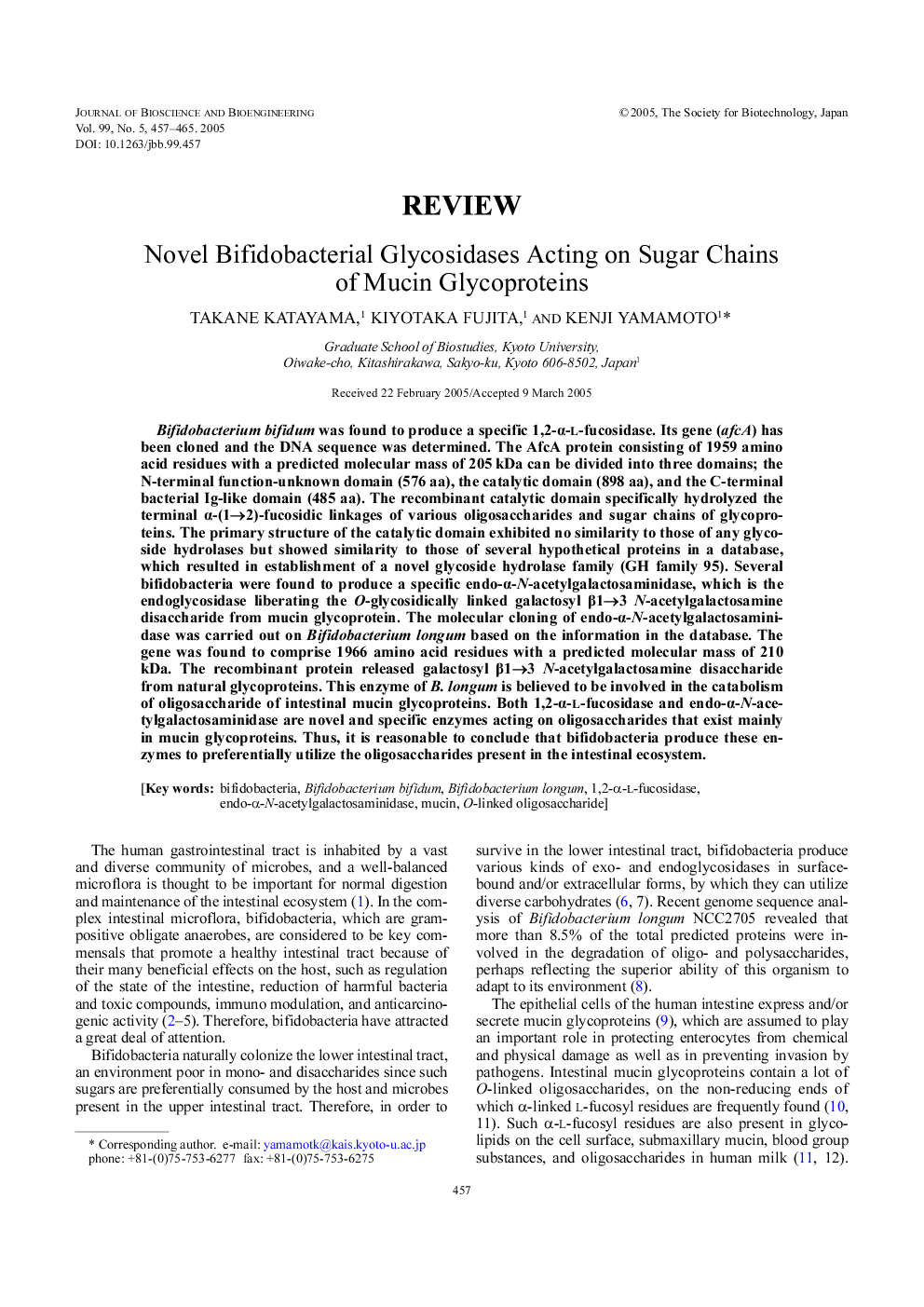| Article ID | Journal | Published Year | Pages | File Type |
|---|---|---|---|---|
| 9603215 | Journal of Bioscience and Bioengineering | 2005 | 9 Pages |
Abstract
Bifidobacterium bifidum was found to produce a specific 1,2-α-L-fucosidase. Its gene (afcA) has been cloned and the DNA sequence was determined. The AfcA protein consisting of 1959 amino acid residues with a predicted molecular mass of 205 kDa can be divided into three domains; the N-terminal function-unknown domain (576 aa), the catalytic domain (898 aa), and the C-terminal bacterial Ig-like domain (485 aa). The recombinant catalytic domain specifically hydrolyzed the terminal α-(1â2)-fucosidic linkages of various oligosaccharides and sugar chains of glycoproteins. The primary structure of the catalytic domain exhibited no similarity to those of any glycoside hydrolases but showed similarity to those of several hypothetical proteins in a database, which resulted in establishment of a novel glycoside hydrolase family (GH family 95). Several bifidobacteria were found to produce a specific endo-α-N-acetylgalactosaminidase, which is the endoglycosidase liberating the O-glycosidically linked galactosyl β1â3 N-acetylgalactosamine disaccharide from mucin glycoprotein. The molecular cloning of endo-α-N-acetylgalactosaminidase was carried out on Bifidobacterium longum based on the information in the database. The gene was found to comprise 1966 amino acid residues with a predicted molecular mass of 210 kDa. The recombinant protein released galactosyl β1â3 N-acetylgalactosamine disaccharide from natural glycoproteins. This enzyme of B. longum is believed to be involved in the catabolism of oligosaccharide of intestinal mucin glycoproteins. Both 1,2-α-L-fucosidase and endo-α-N-acetylgalactosaminidase are novel and specific enzymes acting on oligosaccharides that exist mainly in mucin glycoproteins. Thus, it is reasonable to conclude that bifidobacteria produce these enzymes to preferentially utilize the oligosaccharides present in the intestinal ecosystem.
Keywords
Related Topics
Physical Sciences and Engineering
Chemical Engineering
Bioengineering
Authors
Takane Katayama, Kiyotaka Fujita, Kenji Yamamoto,
